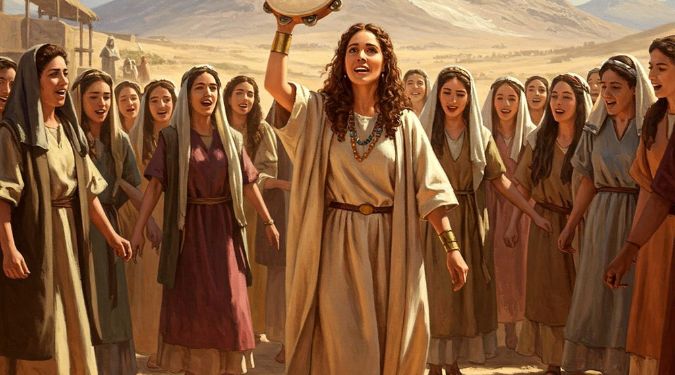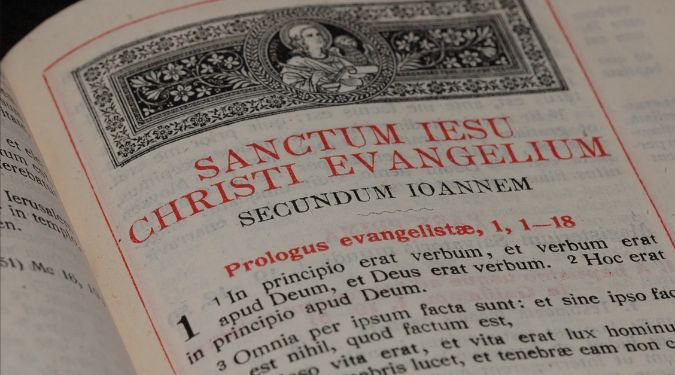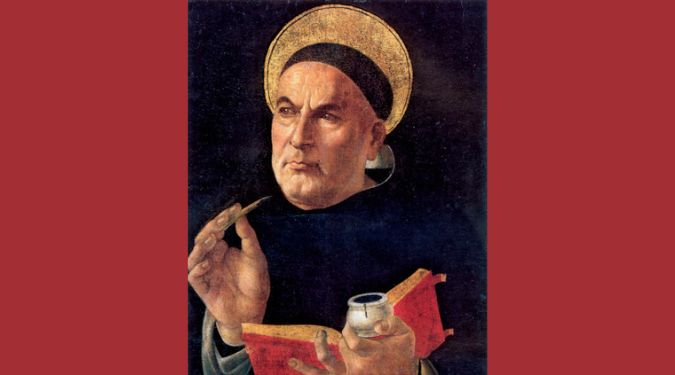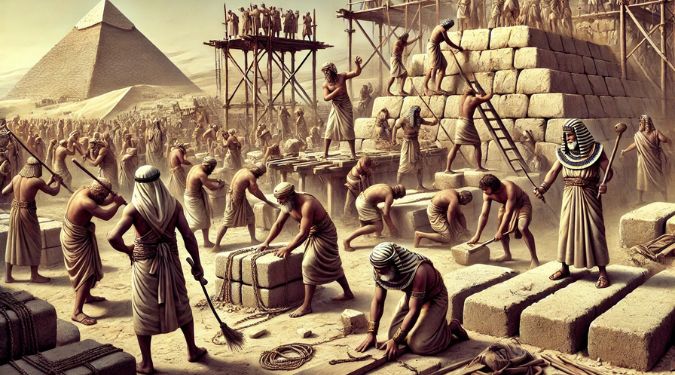Let’s take a look at the story of Miriam, the sister of Moses, and see what bearing her story might have on us.
So many Marys
There are so many Marys are mentioned in the New Testament! Mary, the mother of Jesus, Mary Magdalene, Mary the mother of James the less and Joseph, Mary the wife of Clopas, Mary the sister of Lazarus and Martha, Mary the mother of John Mark, and Mary, mentioned in the 16th chapter of St. Paul’s Letter to the Romans. I count at least six, even if some of them are the same. What’s up with that?
What’s in a name?
All of them have variations of the name “Maryam” or Μαριάμ, the Koine Greek version of the Hebrew name, “Miriam”.
The name Miriam could be derived from the Hebrew word for “bitterness”, or obstinancy or rebelliousness, or some say it could be from an Egyptian word for “beloved”. But all these Mary’s, in a time of foreign occupation and oppression, were most certainly named after a popular Old Testament heroine and liberator, Miriam, the sister of Moses.
A Prophetess
We’ll take a look at her story in the book of Exodus, but first let’s visit the book of Micah, one of Israel’s twelve minor prophets:
For I brought you up from the land of Egypt, and redeemed you from the house of bondage; and I sent before you Moses, Aaron, and Miriam. Micah 6:4
We see in the Book of Numbers and other places that Moses, Aaron, and Miriam were siblings:
The name of Amram’s wife was Joch′ebed the daughter of Levi, who was born to Levi in Egypt; and she bore to Amram Aaron and Moses and Miriam their sister. Numbers 26:59
While we usually think of Moses and Aaron leading the Israelites out of Egypt, their older sister played a large role too, and a God-given role. In the fifteenth chapter of Exodus she is called a prophetess:
For when the horses of Pharaoh with his chariots and his horsemen went into the sea, the Lord brought back the waters of the sea upon them; but the people of Israel walked on dry ground in the midst of the sea. Then Miriam, the prophetess, the sister of Aaron, took a timbrel in her hand; and all the women went out after her with timbrels and dancing. And Miriam sang to them: “Sing to the Lord, for he has triumphed gloriously; the horse and his rider he has thrown into the sea.” Exodus 15:19-21
This echoes the first line of the Song of Moses in chapter 15, so Miriam is leading the women of Israel in singing an antiphonal response to the song of Moses and the men of Israel after the victorious crossing of the sea.
Miriam’s early life
In the first two chapters of the Book of Exodus we are told that Pharaoh had ordered all of the Hebrew boy babies killed at birth, and a couple, Amram and Joch′ebed, had a baby boy and Joch′ebed hid him for three months, and then put him in a basket made of reeds in the river. We pick up the story in Exodus 2:4:
And his sister stood at a distance, to know what would be done to him. Now the daughter of Pharaoh came down to bathe at the river, and her maidens walked beside the river; she saw the basket among the reeds and sent her maid to fetch it. When she opened it she saw the child; and lo, the babe was crying. She took pity on him and said, “This is one of the Hebrews’ children.” Then his sister said to Pharaoh’s daughter, “Shall I go and call you a nurse from the Hebrew women to nurse the child for you?” And Pharaoh’s daughter said to her, “Go.” So the girl went and called the child’s mother. And Pharaoh’s daughter said to her, “Take this child away, and nurse him for me, and I will give you your wages.” So the woman took the child and nursed him. And the child grew, and she brought him to Pharaoh’s daughter, and he became her son; and she named him Moses, for she said, “Because I drew him out of the water.” Exodus 2:4-10
Miriam was a virgin
We read in a homily composed by St. Gregory of Nyssa, a 4th century bishop who lived in what is now eastern Turkey:
“…Miriam the prophetess also gives rise to these surmisings of ours. Directly the sea was crossed she took in her hand a dry and sounding timbrel and conducted the women’s dance. By this timbrel the story may mean to imply virginity, as first perfected by Miriam; whom indeed I would believe to be a type of Mary the mother of God. …it is perhaps not very far removed from the bounds of probability that Miriam was a virgin. However, we can but guess and surmise, we cannot clearly prove, that this was so, and that Miriam the prophetess led a dance of virgins, even though many of the learned have affirmed distinctly that she was unmarried, from the fact that the history makes no mention either of her marriage or of her being a mother; and surely she would have been named and known, not as ” the sister of Aaron, ” but from her husband, if she had had one; since the head of the woman is not the brother but the husband. But if, among a people with whom motherhood was sought after and classed as a blessing and regarded as a public duty, the grace of virginity, nevertheless, came to be regarded as a precious thing…” On Virginity, chapter 19
She wasn’t perfect though
St. Gregory called Miriam a “type” of the Blessed Virgin Mary. A “type” is a pre-figuring of a New Testament person by a character in the Old Testament. Types need only to prefigure some aspects of their New Testament counterparts, not all. We see an example of this in Miriam, who definitely was not born without Original Sin as was Our Blessed Mother. At one point during the Israelite’s sojourn through the wilderness, Miriam became jealous of Moses:
Has the Lord indeed spoken only through Moses? Has he not spoken through us also?” And the Lord heard it. Numbers 12:2
God turned Miriam’s skin white, like a leper, and she was banished to outside the camp for 7 day, and was then restored to health (Numbers 12:10ff).
In Deuteronomy 24:9 we read, “Remember what the Lord your God did to Miriam on the way as you came forth out of Egypt.”
Her Death
Miriam died in the desert, before reaching the Promised Land:
And the people of Israel, the whole congregation, came into the wilderness of Zin in the first month, and the people stayed in Kadesh; and Miriam died there, and was buried there. Numbers 20:1
Conclusion
We should believe, as did St. Gregory of Nyssa, that Miriam was a type of Mary for at least six reasons:
- The Greek name Mary is the equivalent of the Hebrew Miriam.
- Both sang a song of deliverance (Magnificat and the Song of Moses and Miriam)
- Both were prophets, with Mary prophesying her own blessedness: “For behold, henceforth all generations will call me blessed” Luke 1:48. In the Litany of Loreto we invoke Mary’s help under the title of “Queen of Prophets”.
- Both were lifelong virgins.
- Both watched over a redeemer of Israel. Miriam with Moses in the river, and Mary and the young Jesus.
- Both intimately cooperated with the saving work of God, one with the deliverance of Israel from Egypt and one with our redemption in Christ, prefigured by the deliverance of the Israelites from Egypt.
Holy Mary, Queen of the Prophets, pray for us!
Source
Nicene and Post-Nicene Fathers, Second Series, Vol. 5. Edited by Philip Schaff and Henry Wace. Translated by William Moore and Henry Austin Wilson. (Buffalo, NY: Christian Literature Publishing Co., 1893.) Revised and edited for New Advent by Kevin Knight. <http://www.newadvent.org/fathers/2907.htm>.



